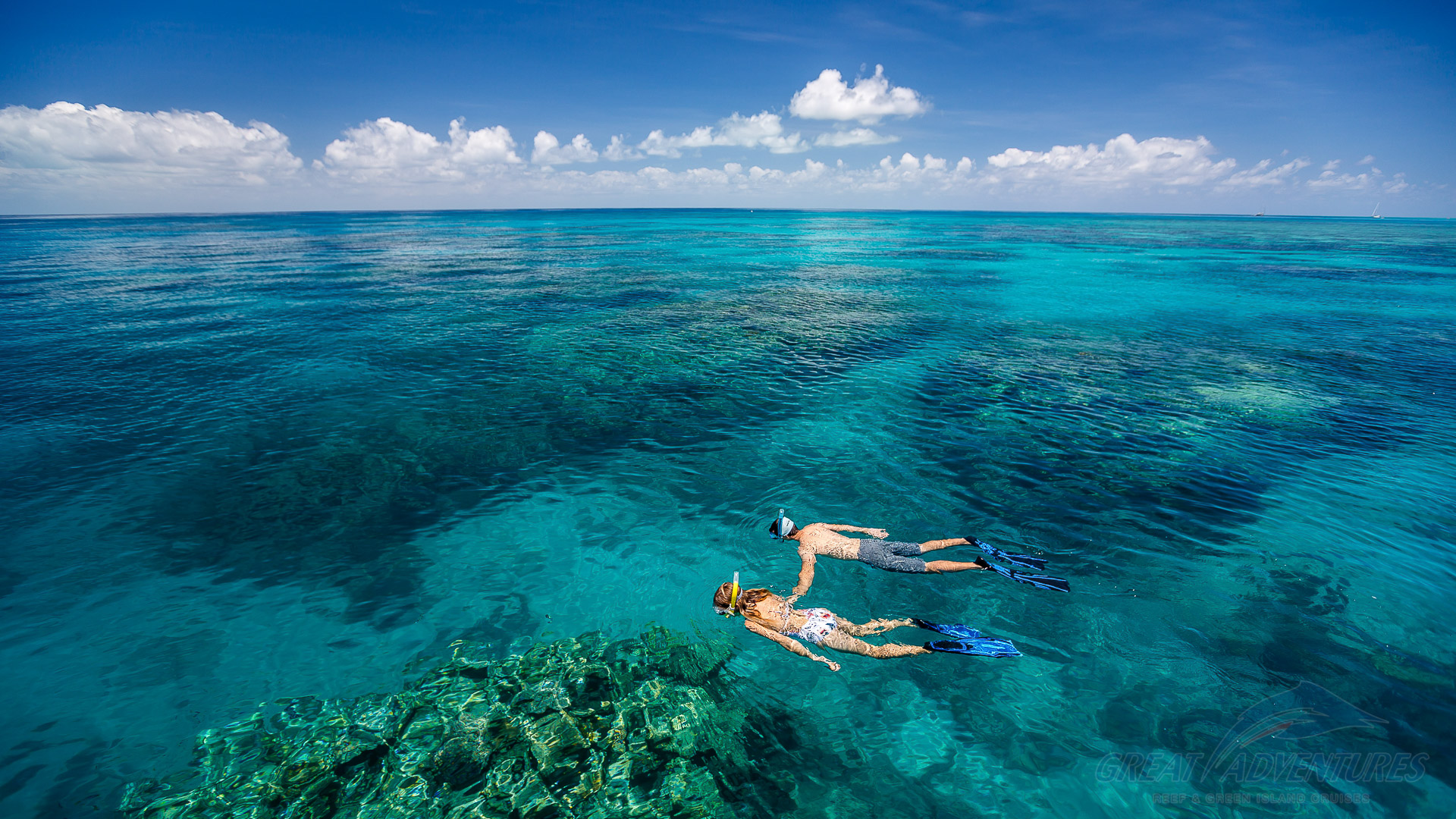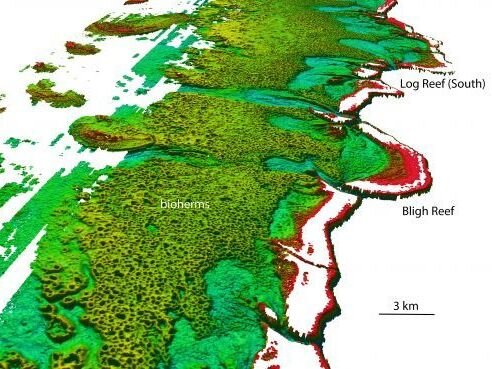
These are fish congregating on the Kitutia Reef. CREDIT Jennifer O’Leary
A survey of 97 coastal ecosystem experts revealed impacts of climate disturbance but also instances of resilience in all ecosystem types evaluated and at multiple locations worldwide
From the AMERICAN INSTITUTE OF BIOLOGICAL SCIENCES
Climate-driven disturbances are having profound impacts on coastal ecosystems, with many crucial habitat-forming species in sharp decline. However, among these degraded biomes, examples of resilience are emerging. Writing in BioScience, Jennifer O’Leary, a California Sea Grant Marine Biologist based at Polytechnic State University, and her colleagues describe these recoveries and highlight the possible implications for ecosystem-sparing management.
To gain insight into disturbed coastal habitats, the authors surveyed 97 marine experts about their observations of climate-induced perturbations, including extreme storms, temperature changes, and ocean acidification. Eighty percent of those who had witnessed climate extremes also identified evidence of habitat resistance or rapid recovery.
According to O’Leary and her colleagues, the survey results indicated that “bright spots of ecosystem resilience are surprisingly common across six major coastal marine ecosystems.” In some cases, resilience was marked by striking recoveries. In one bleaching event in Western Australia, up to 90% of live coral was lost as a result of severe bleaching. Despite reaching a low of 9% unbleached area, the healthy reef surface recovered to 44% within 12 years. According to the survey of experts, the factors enabling resiliency were varied, but areas of remnant tridimensional habitat and high connectivity were the most frequently cited contributors. Sound management practices were also considered important, particularly the control of additional human stressors.
The authors hope that by elucidating the causes of resilience, they can “uncover local conditions and processes that may allow ecosystems to maintain their structure and function and continue providing ecosystem services to humans.
” They argue that if marine protected areas “are spaced appropriately given the reproductive output and dispersal potential of species,” it may be possible to mitigate the damage caused by climate disturbance events. Nevertheless, O’Leary and her colleagues caution that local bright spots do “not contradict the overwhelming evidence that climatic impacts present a major stressor to coastal ecosystems,” although they do provide “optimism that we can indeed identify and manage for conditions that facilitate resilience to climatic stress.”
###
Ref.: https://wattsupwiththat.com/2017/02/02/not-cooperating-with-climate-alarm-marine-ecosystems-show-resilience-to-climate-disturbance/
Fifth tourist in 3 months dies while snorkeling at Great Barrier Reef

An Irukandji jellyfish is pictured next to a match head. (AP)
A British tourist has died on a trip to the Great Barrier Reef after swimming in an area suspected to be plagued by killer jellyfish.
The 63-year-old man, who has not been named, was killed during a snorkeling trip at Moore Reef– 25 miles off the coastline of Cairns, in Queensland, Australia. He is believed to have been just feet away from the reef pontoon when he had a heart attack clinging to a safety ring.
A rescue helicopter was sent but emergency response crewmembers could not revive the man.
His death came the same day a 43-year-old woman was rushed to hospital by helicopter to Cairns Hospital in a critical condition after being pulled from the water off Green Island unconscious.
The incidents have heightened suspicions of attacks by Irukandji jellyfish in the area, one of the world’s most venomous creatures.
On Jan. 30, three children suffered suspected Irukandji stings off nearby Fitzroy Island, just under 20 miles from Moore Reef.
Last month, several beaches in the area, including Three Cairns beach, were closed to the public following sightings of the jellyfish.
This is the fifth death in the last three months at the Great Barrier Reef.
In November, two French tourists died only minutes apart when they were snorkeling. Their deaths were followed by that of 60-year-old British scuba diver David Lowe from Sheffield, who was found on the ocean floor during a holiday with his wife.
At the time, cardiologist Dr. Ross Walker told ABC News, “I think it’s highly likely they were stung by Irukandji. Irukandji are the size of your little fingernail, they’re very small, you can’t see them.
“Let’s look at the fact and probability. It’s highly unlikely that two people are going to die within minutes of each other just because they’ve got underlying medical conditions.”
Professor Jamie Seymour said, “Because the water temperature has increased, it allows them to go further and further south.”
This story originally appeared on The Sun.

Massive ‘Doughnut’ Reef Discovered Behind Australia’s Great Barrier Reef

The Great Barrier Reef off the coast of Queensland, Australia, in August 2009. Scientists say they have discovered a second, enormous reef in the deeper water behind the Great Barrier Reef. Phil Walter/Getty Images
From the air, it looks like a 2,300-square-mile field of submerged doughnuts on the ocean floor.
The limestone circles amount to a second, deeper reef behind the Great Barrier Reef, researchers say. The scientists who discovered it off the coast of northern Australia say they’re surprised by its vast size — and by the strange shapes.
“When the three-dimensional shape of them was revealed, it was really surprising,” lead author Mardi McNeil of the University of Queensland tells the Australian broadcaster ABC.
“They form these fields of doughnut-shaped structures … sometimes they’re like singular circular rings, sometimes in groups of three or four,” she adds.
The “they” McNeil refers to is an algae called Halimeda. When Halimeda is alive, it’s green. When it dies, it turns into white, flaky limestone pieces that look like cornflakes. The flakes build up over time — the newly discovered reef likely goes back 10,000 years — and can make doughnut-shaped mounds 30 feet tall and 600 feet across.
The findings were published in the journal Coral Reefs.
Those mounds, known as Halimeda bioherms, stretch much farther along the northern Australian coast than anyone expected. Scientists who study the shallow coast beyond the Great Barrier Reef — the so-called inter-reef area — knew the large mounds of dead algae existed for decades, but they had previously thought the ecosystem covered about 800 square miles.
The new finding triples that area.

A northwesterly view of the Bligh Reef area off Cape York in northern Australia. Depths are red (shallow) to blue (deep), over a depth range of about 150 feet. The green area shows the newly discovered doughnut-shaped structures created by algae. James Cook University
One of the study authors, Robin Beaman of James Cook University, says in a press release, “We’ve known about these geological structures in the northern Great Barrier Reef since the 1970s and ’80s, but never before has the true nature of their shape, size and vast scale been revealed.”
The team used laser image data that the Australian navy gathered by plane to make a 3-D map of the ocean floor. Using laser imaging to map coral reefs isn’t new. The U.S. Geological Survey and the National Oceanic and Atmospheric Administration have used planes carrying laser imaging systems to make 3-D maps of reefs off the coast of Florida in Biscayne National Park, Dry Tortugas National Park and the NOAA Florida Keys National Marine Sanctuary.
The new discovery could be helpful for scientists trying to understand the climate history on the Great Barrier Reef. As the algae lives, dies and calcifies, it forms layer upon layer of fossilized information on about 10,000 years of living conditions in the ocean.
“Just like tree rings — the rings can tell you the age of when it was formed and the environment it was formed in. So you’ve got 20 meter-thick piles of sediment that can tell you an awful lot about past oceanographic history,” Beaman tells ABC.
And then there’s the question of what lives there today. Because the new reef is 60 feet to 150 feet deep, very few people have ever seen any part of it. McNeil says those who have dived there came back with different accounts. Everything from, ” ‘they’re covered in this lush thick veneer of living green,’ ” she tells ABC, “to ‘just white limestone flakes, like a white desert.’ ”
Ref.: http://www.npr.org/sections/thetwo-way/2016/09/02/492383489/massive-donut-reef-discovered-behind-australias-great-barrier-reef


